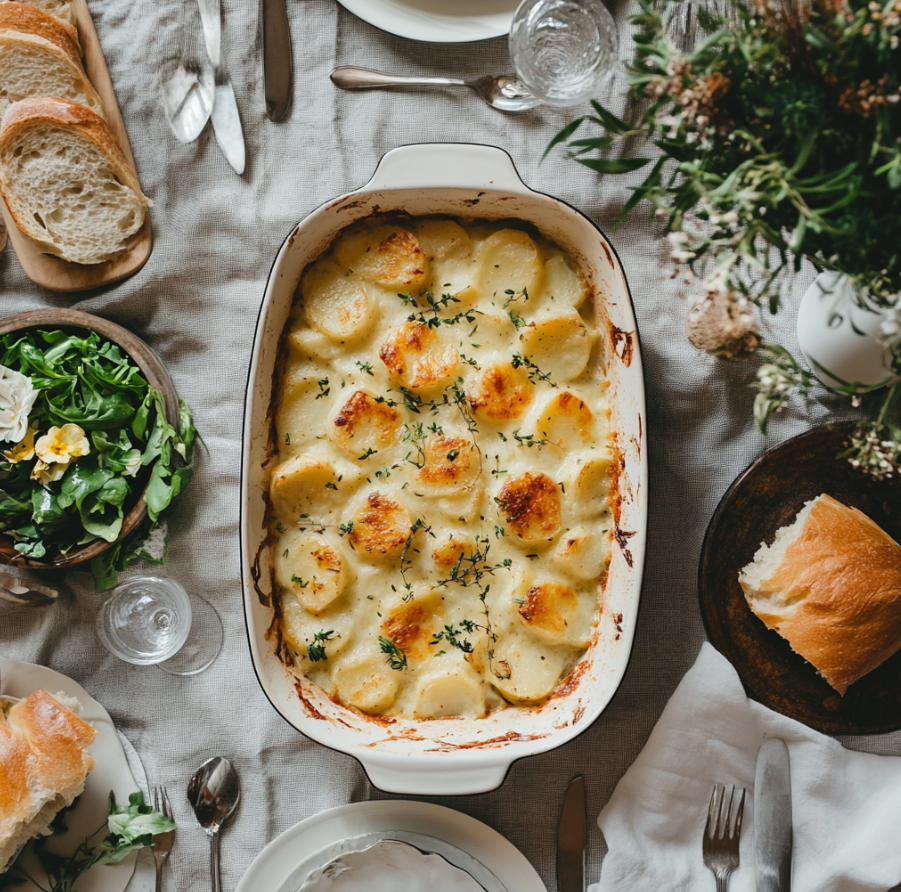Funeral potatoes get their unique name from their frequent appearance at post-funeral gatherings. But why are they called funeral potatoes? This comforting, cheesy dish has a rich tradition that explains its association with mourning and community support.
- What Are Funeral Potatoes?
- The Origins of the Name "Funeral Potatoes"
- Funeral Potatoes in Mormon Culture
- Regional Variations and Names
- How Funeral Potatoes Became a Comfort Food
- The Cultural Significance of Funeral Potatoes
- Recipe Analysis: Classic Funeral Potatoes
- Funeral Potatoes Beyond Funerals
- Why the Name Endures
- Conclusion
- FAQs
What Are Funeral Potatoes?
Funeral potatoes refer to a hearty casserole made with shredded or diced potatoes, sour cream, cheese, and sometimes a crunchy topping like cornflakes or breadcrumbs. It’s a versatile dish, beloved in various regions for its comforting qualities and ease of preparation.
The dish earned its name because it frequently appears at post-funeral gatherings, where people come together to support grieving families. This association with comfort food is why it has become so popular in these contexts. For more on how comfort foods play a role in American culture, you might explore Popular Comfort Foods for Gatherings.
The Origins of the Name “Funeral Potatoes”
The term “funeral potatoes” has its roots in the Mormon community, where food is often brought to the homes of grieving families after a funeral. This dish, easy to make in large quantities and universally comforting, became a common offering. It symbolizes the communal care and support extended during times of mourning.
For those interested in the cultural practices that influenced this tradition, you might explore Traditional Mormon Funeral Foods.
Funeral Potatoes in Mormon Culture
Funeral potatoes hold a significant place in Mormon culture, where they are a staple at post-funeral luncheons. The dish serves as a way for the community to show compassion and support for the bereaved. Over time, this comforting casserole has transcended its initial context, gaining popularity outside the Mormon community as well.
To explore other dishes commonly served at Mormon gatherings, check out Classic Mormon Recipes.
Regional Variations and Names
The dish known as funeral potatoes is also recognized by different names across various regions:
- Hash Brown Casserole: In the Southern United States, this version often includes additional cheese and is popular at holiday dinners.
- Cheesy Potato Bake: In the Midwest, this variation might use different cheeses or toppings but retains the comforting essence of the dish.
- Potato Casserole: A more generic name used in areas where the dish isn’t directly tied to funerals.
These variations demonstrate the dish’s adaptability and widespread appeal.
How Funeral Potatoes Became a Comfort Food
Comfort food is meant to provide emotional solace, especially in difficult times. Funeral potatoes perfectly fit this description, offering a warm, cheesy, and satisfying dish that feels familiar and reassuring. The creamy texture and rich flavors evoke feelings of nostalgia and comfort, making it an ideal dish for gatherings where emotional support is needed.
For other comforting dishes, you might also enjoy Hearty Casserole Recipes.
The Cultural Significance of Funeral Potatoes
Beyond being a dish, funeral potatoes represent the strength and support of a community. The act of preparing and sharing this dish has become a symbol of love and care during times of loss. It’s more than just nourishment; it’s a gesture of empathy, making it an important part of many post-funeral gatherings.
In modern culture, funeral potatoes are now enjoyed in various settings, from family dinners to potlucks, expanding beyond their original association with funerals.
Recipe Analysis: Classic Funeral Potatoes
Here’s a simple breakdown of the traditional funeral potatoes recipe that you can prepare at home:
Ingredients:
- 6 cups frozen hash browns, thawed
- 2 cups sour cream
- 1 can cream of chicken soup
- 2 cups shredded cheddar cheese
- 1/2 cup melted butter
- 1/2 cup chopped onions
- Salt and pepper to taste
- 2 cups crushed cornflakes or breadcrumbs for topping
Preparation:
- Preheat the oven to 350°F (175°C).
- Combine the hash browns, sour cream, soup, cheese, butter, and onions in a large bowl. Mix well.
- Season with salt and pepper.
- Transfer the mixture to a greased baking dish and top with crushed cornflakes or breadcrumbs.
- Bake for 45 minutes until the top is golden brown and bubbly.
This classic recipe embodies the essence of funeral potatoes: creamy, cheesy, and heartwarming, with a delightful crunchy topping.
Funeral Potatoes Beyond Funerals
Though originally tied to somber events, funeral potatoes have found their way into many other occasions. Families often serve them during holidays, potlucks, and casual dinners. Their ability to be prepared in large quantities and their universal appeal make them a go-to dish for various gatherings.
The dish’s popularity in these settings shows how it has evolved beyond its original context, becoming a beloved staple in American cuisine.
For more ideas on how to use this dish beyond its traditional context, you can explore Creative Casserole Ideas for Any Occasion.
Why the Name Endures
Despite its association with funerals, the name “funeral potatoes” persists, largely because it captures the dish’s role in providing comfort during difficult times. The name has become part of the dish’s identity, serving as a reminder of its origins and the communal care it represents.
As the dish continues to be enjoyed in different contexts, the name remains a testament to its historical significance and enduring popularity.
Conclusion
Funeral potatoes are more than just a comforting casserole; they are a symbol of community, support, and tradition. Whether served at a post-funeral gathering, a holiday meal, or a potluck, this dish continues to provide comfort and nourishment to those who need it most. Its rich history, combined with its delicious flavor, ensures that funeral potatoes will remain a cherished dish for generations to come.

